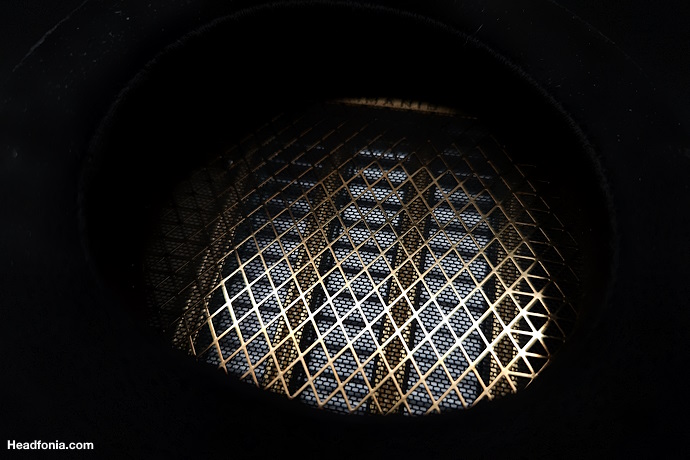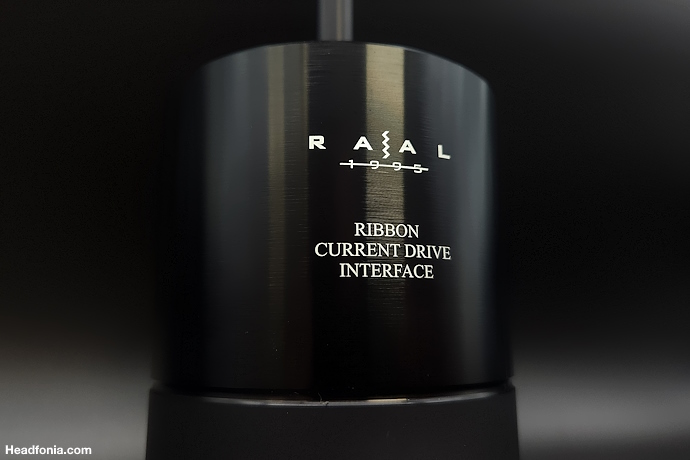
In this review we look at the RAAL 1995 Immanis headphone. The Immanis’ price is around €9.999 Euro.
Disclaimer: I received the Immanis from RAAL 1995 directly. RAAL is not related to Headfonia in any way.
Intro
I first wrote about the RAAL Immanis headphone in one of my High-End Munish show reviews and previews, so some parts of this article might look familiar. As we’re September now, that also means I had quite a bit of delay publishing this review. Apologies to all of you who were waiting for this article, and especially to Aleksandar.
RAAL 1995
Quite a bit has changed since I wrote my initial article on the SR-1b. Where we then were talking about RAAL Requisite, we now with RAAL 1995 have a new name and company. Of course Aleksandar Radisavljevic still is the man in charge.
Aleksandar explains: RAAL-requisite introduced the true-ribbon technology to headphones, pioneering its way into Head-Fi. Our goal at R-r was to offer great sounding, yet sensibly priced headphones and ancillary parts. RAAL 1995 is here to unleash the full potential of the technology and expand its performance to the next level.
Why then RAAL 1995 I hear you ask? Easy! Aleksandar’s first finished speaker was publicly shown back in 1995, so he’s going back to his roots with the naming. RAAL 1995 is focusing on a higher-end headphone segment, of course still using ribbon drivers.
If you’re not familiar yet with RAAL Requisite’s iconic SR-1b headphone, I advise to read up on the SR-1b article first, you can find it here:
RAAL 1995’s website is still under development, but you can find it here in the future.
Ribbon technology
Before continuing with the review, let’s quickly discover the True Ribbon technology.
From Wikipedia:
A ribbon speaker consists of a thin metal-film ribbon suspended in a magnetic field. The electrical signal is applied to the ribbon, which moves with it to create the sound. The advantage of a ribbon driver is that the ribbon has very little mass; thus, it can accelerate very quickly, yielding very good high-frequency response. Ribbon loudspeakers are often very fragile—some can be torn by a strong gust of air. Most ribbon tweeters emit sound in a dipole pattern. A few have backings that limit the dipole radiation pattern. Above and below the ends of the more or less rectangular ribbon, there is less audible output due to phase cancellation, but the precise amount of directivity depends on ribbon length.
Ribbon designs generally require exceptionally powerful magnets, which makes them costly to manufacture. Ribbons have a very low resistance that most amplifiers cannot drive directly. As a result, a step down transformer is typically used to increase the current through the ribbon. The amplifier “sees” a load that is the ribbon’s resistance times the transformer turns ratio squared. The transformer must be carefully designed so that its frequency response and parasitic losses do not degrade the sound, further increasing cost and complication relative to conventional designs.
Immanis
Where the SR-1a and SR-1b had only 1 ribbon, the RAAL 1995 Immanis sports 3 Ribbon drivers, Magna sports two. The design has completely changed as well, and the headphone now looks like regular headphones. More on that later in this article.
Under the hood, everything is new compared to the SR-1b. This is the next generation or ribbon drivers that in certain areas parted ways with the old, but inherited the best features of the previous ones. Aleksandar explains: “We now have our new R² and R³ drivers that exploit a new idea that small differences in ribbon segments are beneficial. We tune the segments slightly differently, so they can’t repeat errors in the same way. We call it complimentary tuning. You can’t do that with a single ribbon, or any other single diaphragm, so now we are doubling and tripling them. This not just to get more SPL or sensitivity, the obvious benefits, but to add another layer of improvement in sound quality. Imperfections are inevitable. It’s about managing them in a way that doesn’t compromise other areas of sound quality.”
The three Immanis ribbons have a combined surface area of 25.2 cm², a shell diameter of 11 cm and an impedance of 0.057Ω (0.29Ω with the 1.8 m long Star-8 MkII headphone cable). The maximum sound pressure level is around 118 dB. In comparison, the Immanis ribbons are 1.45 times larger than the SR-1. Between Immanis and Magna, Immanis offers 50% more surface area than Magna and has a larger front chamber. The SPL capability of 118dB disproves the stereotype of fragile ribbons and underlines the performance of these Serbian ribbon headphones.

Interface & Cables
The Raal 1995 headphones aren’t your regular plug and play headphones, and in order for your amp to work correctly with the Immanis headphone you need to use one of Raal’s Ribbon Current Drive Interfaces like the TI-1b or their newest one (RCD-32(Ohm)) which you can see in the pictures. Both interfaces work fine, you don’t need to buy a new interface if you have one already. The RCD Interface, featuring purpose designed, highest-quality, toroidal transformers is designed in the style of a headphone stand. Toroidal transformers convert a voltage-controlled amplifier output into a current-controlled signal for driving the ribbons.
You also need to use a special headphone cable as well as an input Cable. You can buy a full bundle with everything you need, so no worries there. If you already have the cables and interface, then you can buy the Immanis only. Contrary to with the SR-1b you no longer may use the open-baffle Compensation Barrels. The barrels will change the intended sound signature but also, because of reducing the level above 2k for about 5dB, they may overload the ribbons with bass when you increase the volume to compensate for the 5dB loss. So make sure to remove the barrels from your SR-1a/b system when switching to the (Magna or) Immanis.

Basically you connect the headphone output of your amp to the (TI-1b/RCD) interface. You connect the Immanis to that interface with your special cable. The volume dial used is the one of your headphone amp. It’s pretty straightforward really. Immanis – in theory – requires only 1.5 watts, allowing for higher efficiency and wider compatibility. Suitable amplifiers, such as the Auris Headonia 10th Anniversary 300B or the Trafomatic Primavera with SV811-10, provide full power to the interface.
If you don’t want to use the interface, you can opt to buy one of the rare ribbon ready amplifiers on the market (like the one from SAEQ). Compatible amplifiers should have a low output impedance of less than 10mV DC offset and suitable for driving loads of 32Ω or above.
The article continues on the second page. Click here or use the jumps below to continue reading.
Page 1: Intro, RAAL 1995, Ribbon technology, Immanis, Interface & Cables
Page 2: Price & Accessories & Delivery, Build quality & Design & Comfort & Isolation, Specifications, Sound Intro, Sound general
Page 3: Sound Synergy, Comparisons, Conclusion, Summary
creditSource link







